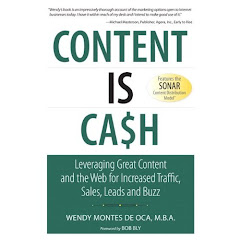1. Instill Shopper Confidence: Make Sure Your SSL Seal And Other Consumer-Trust Logos Are Prominent. SSL or secure socket layer is a sign that the site is encrypted...that the information consumers enter, such as personal and credit card information, is protected. Most eCommerce sites must file for an SSL certificate from vendors such as VeriSign, GoDaddy, eTrust, TRUSTe, and others. It's a good practice to display the vendors logo on your order page, as well as make sure in the browser window the "https" or image of a lock is present. This is a clear and comforting sign to consumers that they can order on line with confidence. Other logos that are in plain view and are anchors on each page of your website can also instill confidence with potential buyers, some may require membership or purchase, when applicable, and may include Better Business Bureau (“BBB”), PayPal Verified, Authorize.net Verified Merchant, and virus protection software (i.e. “McAfee Secure”). Also, if you accept credit cards and have a money back guarantee, there’s nothing more powerful than strong, eye-catching graphic image icons, such as “100% Money Back Guarantee” or “We Accept All Major Credit Cards” (than have images of Visa, Mastercard, Amex, and Discover).
2. Encourage Online Sales vs. Other Response Mechanisms. Offer special "Internet Only Pricing" to customers. It could be a discount of 5-10% if they order online versus by phone, fax or mail. This reduces any potential overhead costs for staffing fees such as telesales or order entry personnel. These web only specials can be highlighted on your home page via a banner ad as well as on your product pages near qualified items.
3. Offer Free Shipping. Many eTailers already factor all or a portion of shipping into the retail price of an item as part of their COGS (cost of goods sold). If you are truly offering free shipping, already factored shipping into the product’s cost, or are simply having a limited time free shipping special– if you’re offering it, mention it – big and bold on your home page. Free shipping offers have a huge psychological affect on consumers when they’re comparing competitor’s products and websites. In addition to product quality and value, offering free shipping can make all the difference regarding the final purchase decision.
4. Take Advantage of Customer Feedback. Have an area on your website or indicate next to select items "Customer Favorite" or "Hot Item". Also, have some glowing customer testimonials or reviews next to the product itself for potential prospects to see. Sites like Amazon, BabiesRUs and others are pros at this strategy as well as using ratings and ‘Likes’ to convey a product’s popularity. Consumers like to feel good about the item they are about to purchase as well as see that it’s popularity with the masses. Seeing a great testimonial and knowing that others purchased the product provides validation and a feeling of comfort to a consumer. In addition to helping the conversion rate, this tactic also helps reduce buyer's remorse and product returns.
5. Free Advertising in Google Shopping (formerly Google Product Search, and before that, Froogle). http://www.google.com/shopping is a free product information platform from Google where you can post a single item or submit a data feed. Your products will appear in Google Product search and may also appear in Google.com search results, depending on keywords used. This is simple and easy and increase your product’s visibility and market share.
6. Optimized Product and Catalog Pages. Sounds obvious, but many folks overlook their catalog and product pages. After doing some keyword research on actual search behavior for your product, refine your meta description, meta keywords and title tag of your product pages. This will help consumers find your product in the organic listing of search engine results.
7. Leverage ‘Special Coupon’ Home Page Banners. This is a best practice with online fashion retailers who typically have a banner ad or interstitial ad on their home page stating something like, "Summer Blow Out Sale, Use Coupon Code 1234". But this concept can be applied to virtually any industry. This is another great way to offer a special discount for your online customers that makes them feel good about the purchase. You can also encourage viral activity by having "forward to friend" or “share” creates viral marketing. Make sure to have some great intro copy mentioning how customers should "pass on the great savings to friends, family, and colleagues."
8. Spread Payments Out. For higher ticket items, consider setting up extended payment plans that allow customers to pay for an item over a few payments. HSN.com and QVC.com have mastered this. If an item is let's say, $200, you might want to offer a flex pay option of "6 easy payments of $33.33" that is conveniently auto-billed to their credit card. Just be diligent when calculating your payment prices as well as creating your return/refund policy for these items. The general rule is that your actual production costs/hard costs should be covered in the first 1-3 payments.











